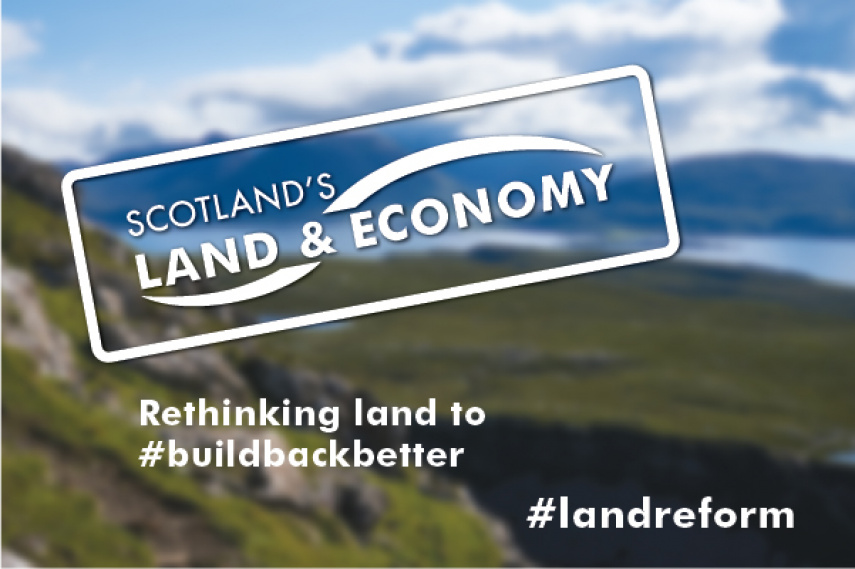
Whose space? Whose heritage?
Cath Denholm

As part of the ‘Scotland’s Land & Economy’ series exploring the fundamental role of land in achieving Scotland’s post-pandemic recovery and renewal, we are publishing a range of guest blogs from leading thinkers across the UK. The purpose of these blogs is to stimulate ideas and debate and do not necessarily represent the view of the Commission.
Building on the recent blog ‘Human Rights and Land Reform: A springboard for future resilience’, Cath Denholm – Executive Director of Corporate Services, Equality and Human Rights Commission, and Deputy Chair, NatureScot – explores the concept of who nature and heritage belong to in defining a post-Covid recovery.
This year has been dominated by COVID-19 and the socio-political context which has formed the backdrop for the pandemic and which is it has also influenced. Since the onset of COVID-19, I have moved from working in public health in Scotland to working in equality and human rights in the UK; and Scottish Natural Heritage – on whose Board I sit – has changed its name to NatureScot. As with many people, my recent experiences have caused me to see the world from a different vantage point, both literally and figuratively. For this blog, I distil that down to two questions: whose space? whose heritage?
In the first weeks of COVID, how we used space outdoors occupied attention and headlines in a way it wouldn’t normally. How much time a day we could exercise outside. How to do it. Who was caught where they shouldn’t be. The numbers of people reportedly going outside regularly increased. Some spaces, such as golf courses, were also opened up in a way they wouldn’t usually be and that was a revelation for many people. The importance of – and uneven access to – high-quality local greenspace was highlighted. Areas of derelict and vacant land in need of transformation – especially inertia where this had been promised – were very exposed.
As things went on, the weather became hotter and people wanted to do what they normally do in hot weather; the headlines revelled in aerial shots of beaches looking jam-packed and desperate aftermaths of discarded litter in beauty spots.
Public health messages and messages about nature are clear. Access to nature and cleaner, greener environments are good for health and wellbeing. For the general public to care about nature is good for nature. And all this applies to both big outdoor landscapes and urban. It is also why initiatives such as the EU-funded Green Infrastructure Strategic Interventions, supported by NatureScot, are so important, because they focus on areas of disadvantage, with many projects targeting vacant and derelict land and providing greenspace close to where communities live. This immediately opens up access to nature and the benefits that brings, and is a positive driver for economic recovery, increasing productivity and promoting inward investment.
We need to see more such initiatives, mainstreamed and invested in. This is a question for policy makers – at national and local level – as well as investors and community developers.
But it is also a question for society and the values driving what we demand of our policy makers. The ‘general public’ is not homogenous. Were there subtexts in the headlines about the beaches and the litter? ‘You can access and benefit from outdoor space if you know how to treat it properly – but some people clearly don’t. And won’t.’ I would suggest that there were. I would also suggest that traditions of power, prejudice and privilege lie close under the surface of all this, but are seldom brought to the fore in constructive ways.
Which takes me to my second question: whose heritage? NatureScot changed its name because the evidence showed that this same ‘general public’ thought heritage was about buildings, not natural assets.
This change of name was made just as ‘heritage’ – manifested as buildings and what we have traditionally put on show in public spaces – also hit the headlines through the Black Lives Matter movement challenging how town centres and other public spaces around the world speak to different communities. People want to access the outdoors. People’s sense of wellbeing is partly bound up in being able to recognise themselves in the public space they use, and many people don’t want public spaces or access to nature – either literally or metaphorically – to perpetuate prejudice, privilege or imbalance of power.
Impacts of access to nature, climate change, public health and equality of opportunity have one thing in common: they are not evenly distributed. Their distribution is a global measure of how sustainable and fair economies and societies are.
The uneven impact of COVID-19 has been stark. It is interesting that our recovery out of COVID-19 increasingly looks as if it will depend on very local knowledge, understanding and respect for who lives there, what their living and social habits are and what will work within that community.
Similarly, if we are to get real about building back a better, healthier, more inclusive society – in which access to outdoor space and nature is more equal, and wellbeing is genuinely pursued as a social goal – we will have to invest location by location, and community by community. We have to put an equal value on accessing space and nature everywhere. And we cannot do that without thinking about how privilege and power over land and public space has influenced the past, and how it will continue to influence the future without a different kind of participation that reflects the diversity of people and their interests.